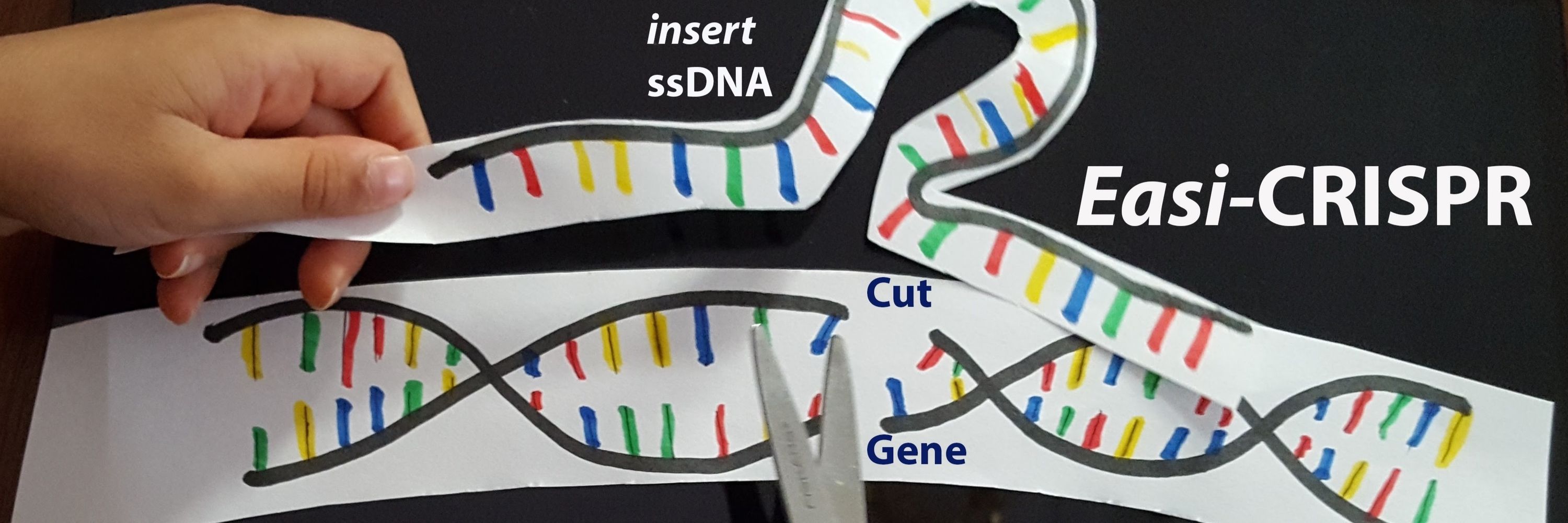CRISPRGuru
@crisprguru.bsky.social
380 followers
260 following
47 posts
Genome Editor. Co-developer of Easi-CRISPR; http://bit.ly/Easi-CRISPR. World now needs peace and solidarity, not war. Opinions mine.
Posts
Media
Videos
Starter Packs
CRISPRGuru
@crisprguru.bsky.social
· May 17

A promising genetic treatment tailor-made for a baby born with a rare… | CRISPRGuru (CB Guru)
How CRISPR saved a baby’s life: a story of how science can move at unprecedented speed when lives are on the line. https://lnkd.in/gBjcvGwx In August 2024, a baby was born with a genetic mutation known to cause fatal liver disease within just a few months. But thanks to decades of foundational research, rapid collaboration across scientific disciplines, and cutting-edge gene editing technology, this child’s life may have been saved—perhaps even cured. Here's is the timeline from Diagnosis to Therapy: ~1 week old: Doctors diagnosed the baby with a lethal liver condition caused by a rare genetic mutation. ~1 month old: Scientists engineered a cell line carrying the same mutation to test whether CRISPR could correct it. Scientists screened guide RNAs and base editors to find the most effective combinations. ~2 months old: The team conducted toxicology studies in monkeys to ensure the safety of the CRISPR tools—specifically the mRNA-based base editor, guide RNAs, and lipid nanoparticle delivery systems. ~5 months old: Scientists created Transgenic mice carrying the same genetic mutation to test the CRISPR therapy in living organism. The results were promising as they showed the mutation was corrected in ~40% of liver cells. ~6 months old: Additional safety studies in mice showed no major side effects, giving confidence to move forward. ~6.5 months old: The research team submitted a request for regulatory approval. Remarkably, just one week later, the FDA granted approval. ~7 months old: The baby received the first dose of the CRISPR-based therapy. Despite simultaneous viral infections, there were early signs of improvement. ~8 months old: A second dose was administered. The baby showed further improvement, though longer-term follow-up will be essential to assess safety and effectiveness. This work was published yesterday in NEJM: https://lnkd.in/gg93Xczm The work was funded by the National Institutes of Health and other organizations. Two key lessons from this story: 1. Science saves lives—but it builds on decades of discovery. CRISPR gene editing has its roots in basic research conducted over 30 years ago. What began as curiosity-driven science has evolved—thanks to the work of hundreds of researchers—into a powerful therapeutic tool. Breakthroughs like these are only possible because of sustained investment in basic and translational research. 2. Animal models are absolutely essential in developing and testing therapies. Transgenic mice and studies in higher mammals were crucial in assessing whether the therapy could work—and whether it was safe to try in a human. Transgenic mice and animal studies remain indispensable for ensuring new treatments are both effective and safe before being used in patients.
tinyurl.com
CRISPRGuru
@crisprguru.bsky.social
· Jan 14

CRISPRGuru (CB Guru) on LinkedIn: I thought being strong meant hiding my struggles—but I learned a better way
Many of us, especially those who left our home countries to pursue bigger dreams, face many struggles and roadblocks in our careers. We often hide these…
www.linkedin.com
CRISPRGuru
@crisprguru.bsky.social
· Jan 9

Heritable polygenic editing: the next frontier in genomic medicine? - Nature
We discuss the potential consequences and ethical concerns of polygenic genome editing of human embryos to alter specific variants associated with polygenic diseases, highlighting the possibility of r...
www.nature.com
CRISPRGuru
@crisprguru.bsky.social
· Dec 4
Reposted by CRISPRGuru
CRISPRGuru
@crisprguru.bsky.social
· Dec 3
CRISPRGuru
@crisprguru.bsky.social
· Dec 1
CRISPRGuru
@crisprguru.bsky.social
· Dec 1

The lives of cells, recorded - Nature Reviews Genetics
Recent advances in genome engineering are enabling the recording of cellular histories into genomes, with single-cell and spatial omics technologies enabling their reconstruction into cellular lineage...
shorturl.at
CRISPRGuru
@crisprguru.bsky.social
· Dec 1

The single-molecule accessibility landscape of newly replicated mammalian chromatin
By developing a long-read sequencing method to simultaneously map replication status
and protein-DNA contacts in cells, Ostrowski, Yang, et al. show that newly replicated
chromatin is enriched for unw...
www.cell.com













